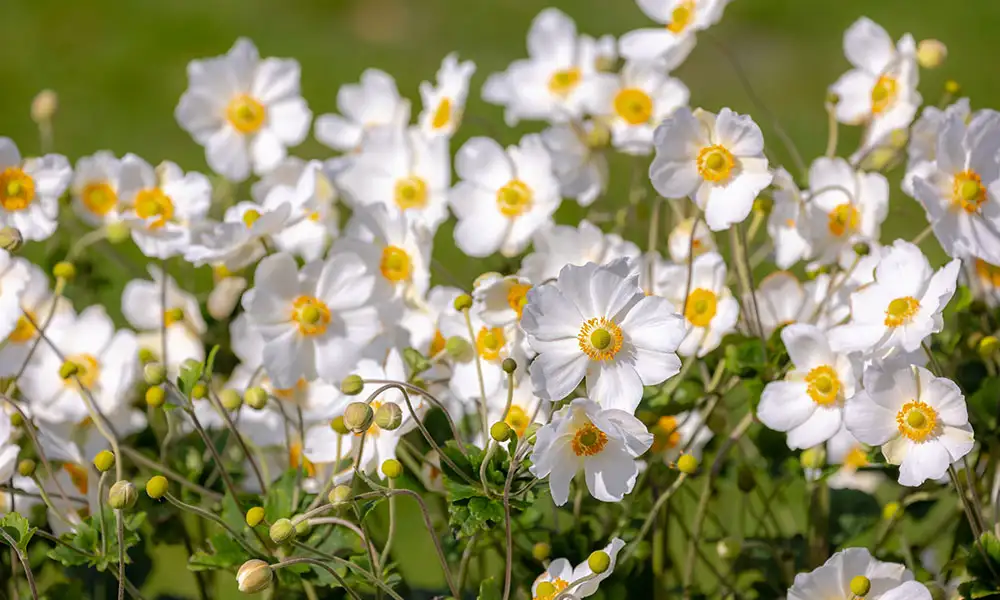Fall is a magical time in the garden! It brings cooler temperatures and a palette of rich, warm colors that can transform your outdoor space.
If you’re new to taking care of plants in zone 6 where we are, you might think that the gardening season ends in summer. But guess what? There are plenty of beautiful perennials that bloom in the fall, bringing vibrant colors and life to your garden when lots of other plants are winding down.
Keep reading, because we’re going to introduce you to (or reacquaint you with) the top five fall-blooming perennials perfect for zone 6 gardens. These plants are not only beautiful, but also relatively easy to care for, making them a great choice for you if you’re busy, don’t want to have plants you have to fuss over, or are just starting out in gardening.
Aster (Symphyotrichum species)
Asters are a must-have for any fall garden. These lovely perennials produce SO. MANY. daisy-like flowers in shades of purple, blue, pink, and white. Asters are also magnets for butterflies and bees, making them a fantastic choice if you want to attract pollinators to your garden.
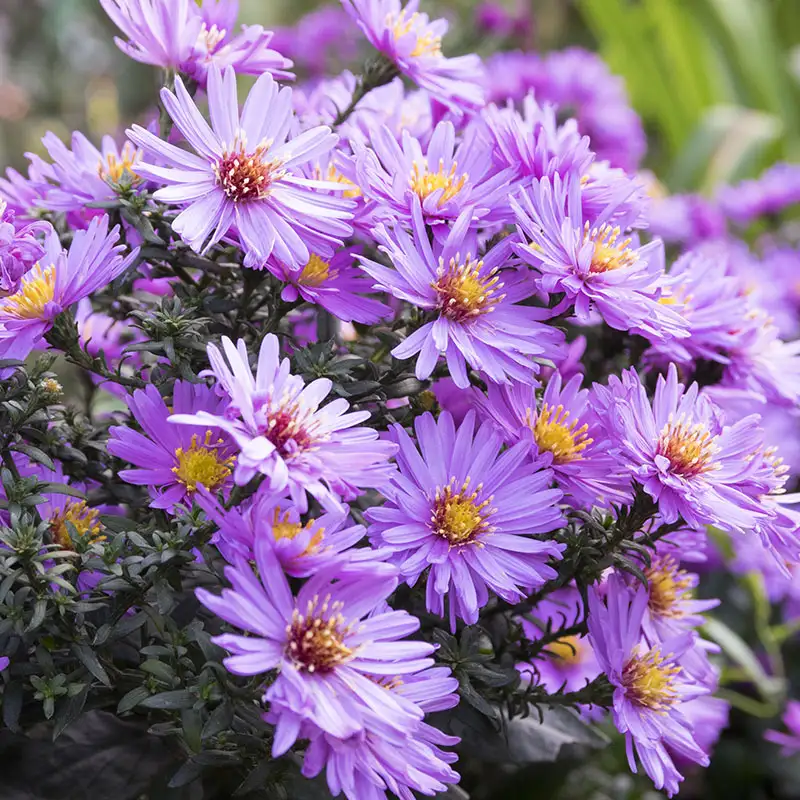
Care Tips
- Asters are relatively low-maintenance. All you need to do is make sure they get plenty of sunlight, and water them during dry spells.
- Removing the spent blooms (deadheading) will encourage more flowers.
Plant Details
- Bloom Time: Late summer to early fall
- Height: 1 to 4 feet, depending on the variety
- Sun Requirements: Full sun to partial shade
- Soil: Well-drained, average soil
Clematis (fall-blooming)
Bring some color and life back to your landscape with a delightful, late-blooming clematis. Fall-blooming clematis varieties can add lovely beauty and interest as the gardening season winds down.
These vigorous climbers flower on new growth and typically start blooming in mid to late summer, and then continue blooming until the first frost. To control growth, these plants can be pruned back to a pair of buds in the dormant season.

Care Tips
- Because these varieties can grow a few feet every year, be sure to give your fall-blooming clematis a strong structure to climb.
It’s also nice to plant a groundcover around its base to keep its roots cool.
Plant Details
- Bloom Time: Late summer to fall
- Height: 15 to 30 feet long
- Sun Requirements: Full, partial
- Soil: Well-drained, moist soil rich in organic matter
Shown, in order: Clematis ‘Sweet Summer Love’ • ‘Sweet Autumn’ • ‘Duchess of Cornwall’
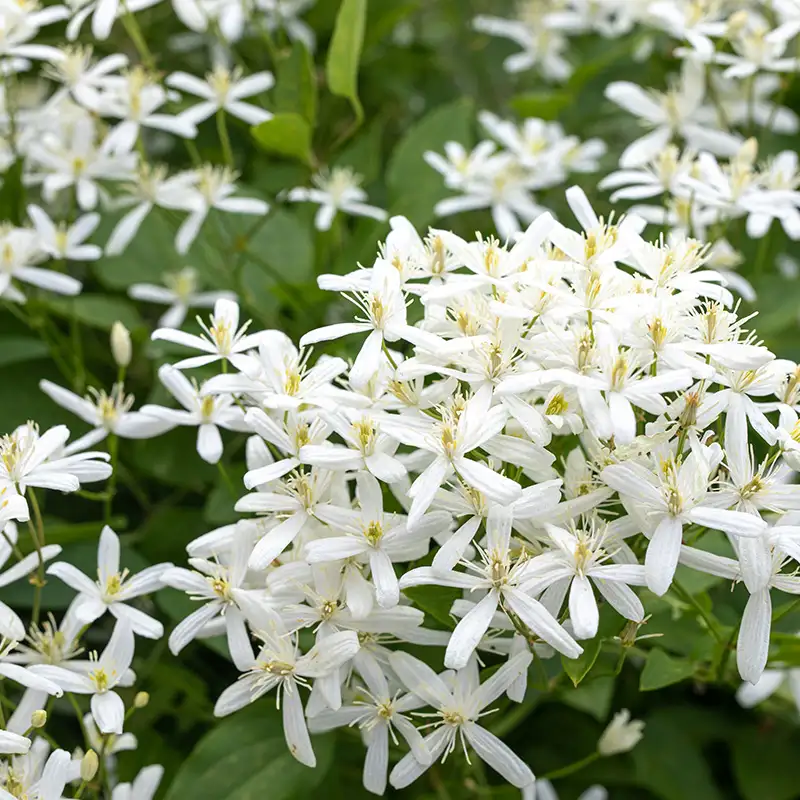

Sedum (upright, fall-blooming)
Upright sedum varieties can offer your fall garden quite a lot! In fact, not just long-lasting colorful blooms, but also texture (and color!) through its succulent-like leaves, AND late-season nectar for our valuable pollinators.
Plus, sedums are heat and drought tolerant, are easy to care for, deer and rabbit resistant, and (again) loved by bees and butterflies.
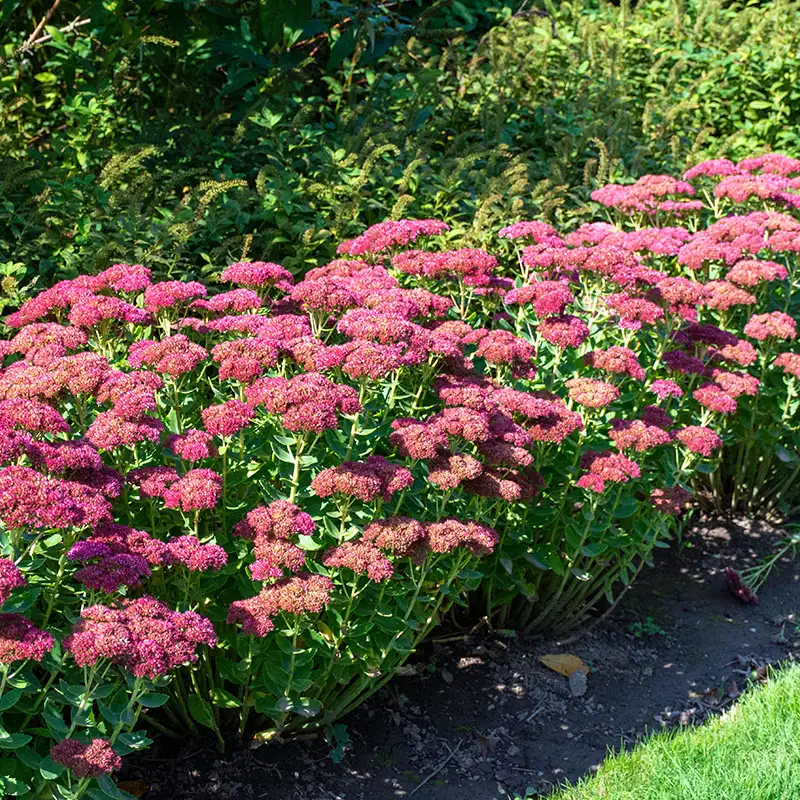
Care Tips
- Upright sedum are somewhat drought-tolerant, although not as much as their groundcover sedum cousins.
- Adding some organic matter to their soil will help strengthen their roots.
- In late winter or early spring, cut back the old flower stems to make way for new growth.
Plant Details
- Bloom Time: Late summer to fall
- Height: 12 to 30 inches tall
- Sun Requirements: Full sun
- Soil: Well-drained, mineral-rich soil
Shown, in order: Sedum ‘Autumn Joy’ • ‘Autumn Fire’ • ‘Dragon’s Blood’ • “Rock N Grow® Tiramisu’


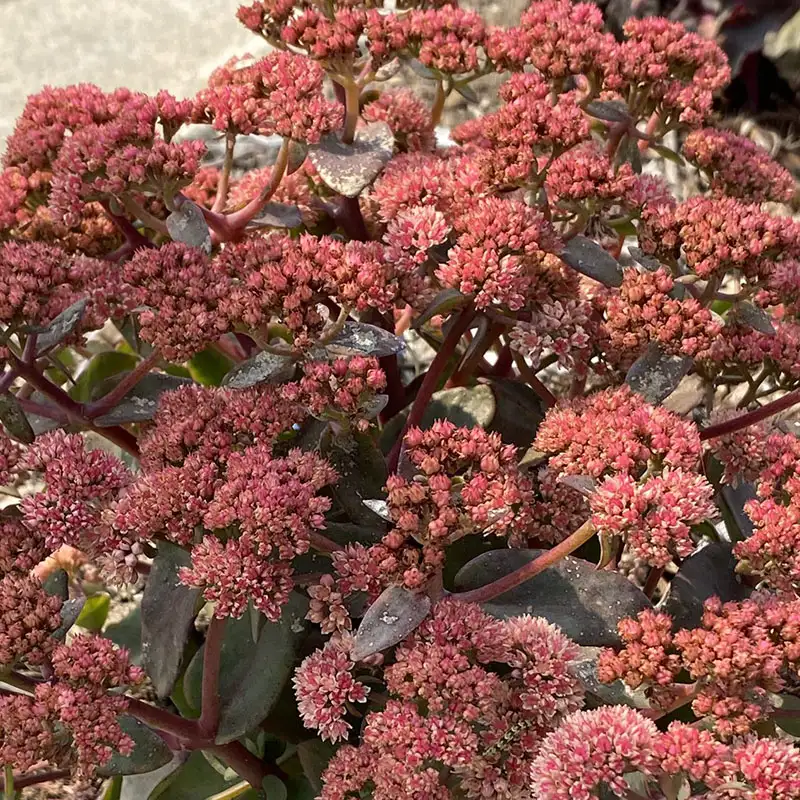
Japanese Anemone (Anemone hupehensis)
Japanese anemones are elegant, shade-tolerant perennials that bring a touch of grace to the fall garden. Their delicate, cup-shaped flowers are usually white, pink, or lavender and sit on top of tall, slender stems. They look stunning planted in drifts or mixed with other fall bloomers.

Care Tips
- Japanese anemones prefer consistent moisture, so water them regularly, especially during dry spells.
- They can spread, so you’ll want to give them space to grow or be prepared to divide them every few years to keep them in check.
Plant Details
- Bloom Time: Late summer to fall
- Height: 2 to 4 feet
- Sun Requirements: Partial shade to full sun (in cooler climates)
- Soil: Moist, well-drained soil
Goldenrod (Solidago species)
Goldenrod is often mistaken for a weed, but it’s a valuable and beautiful addition to the fall garden. This native perennial produces bright yellow flower clusters that attract a wide variety of pollinators. Despite its bad reputation, goldenrod doesn’t cause allergies — it’s ragweed that’s the culprit!
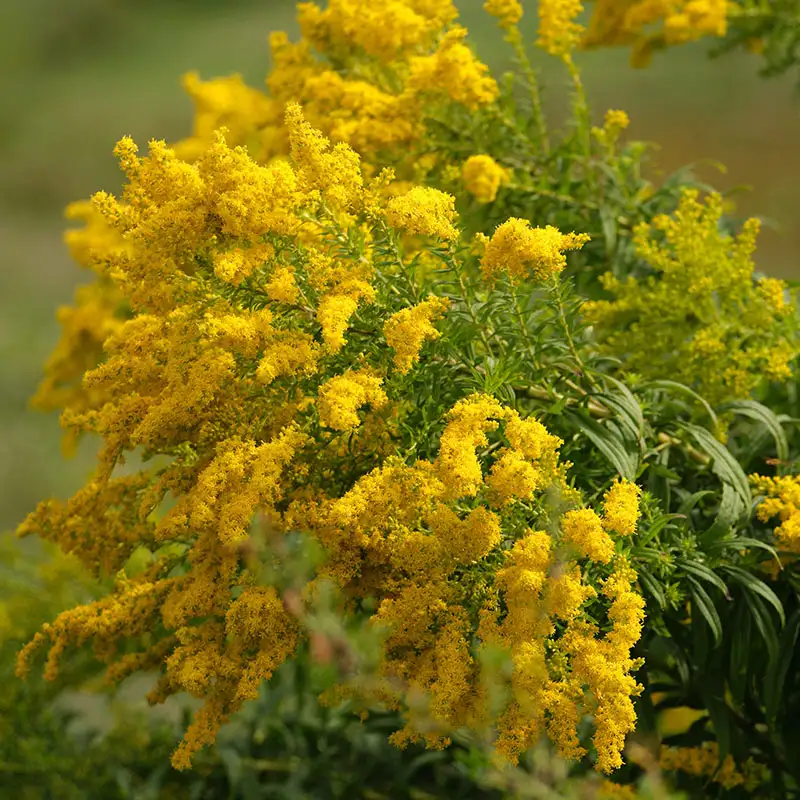
Care Tips
- Goldenrod is a tough, low-maintenance plant. It’s drought tolerant and can handle poor soil conditions.
- Just give it plenty of sunlight and space, as it can spread quickly.
Plant Details
- Bloom Time: Late summer to fall
- Height: 1 to 4 feet, depending on the variety
- Sun Requirements: Full sun
- Soil: Well-drained, average soil
Planting and Care Tips for Fall-Blooming Perennials
Planting Time: Fall is a great time to plant perennials; the soil is still warm, and the cooler weather reduces transplant shock. This gives the plants time to establish roots before winter.
Watering: Make sure your newly planted perennials receive regular water, especially if the weather is dry. Once established, many fall-blooming perennials are drought-tolerant.
Mulching: Apply a layer of mulch around your perennials to help retain moisture, suppress weeds, and protect the roots from temperature fluctuations.
Feeding: Most perennials benefit from a balanced fertilizer applied in early spring. Avoid fertilizing late in the season, as this can promote new growth that may not harden off before winter.
Enjoy Your Fall Garden
With these top five fall-blooming perennials, your zone 6 garden will be alive with color and activity, even as the days grow shorter. These plants are not only beautiful, but also provide valuable nectar for pollinators preparing for winter. So, go ahead and plant a few of these fall favorites — you’ll be rewarded with a vibrant, flourishing garden that lasts well into the autumn months.
If you need any help or have any questions, you can count on your friends at Burnett’s Country Gardens. We’re standing by and look forward to hearing your stories about your lovely fall garden!
